AltVMs: The Next Frontier of Blockchain Virtual Machine
Discover the new wave of blockchain virtual machines reshaping Web3 beyond the EVM. Learn about AltVMs and how they compare to the EVM, and glimpse the multi-VM future powered by AI.
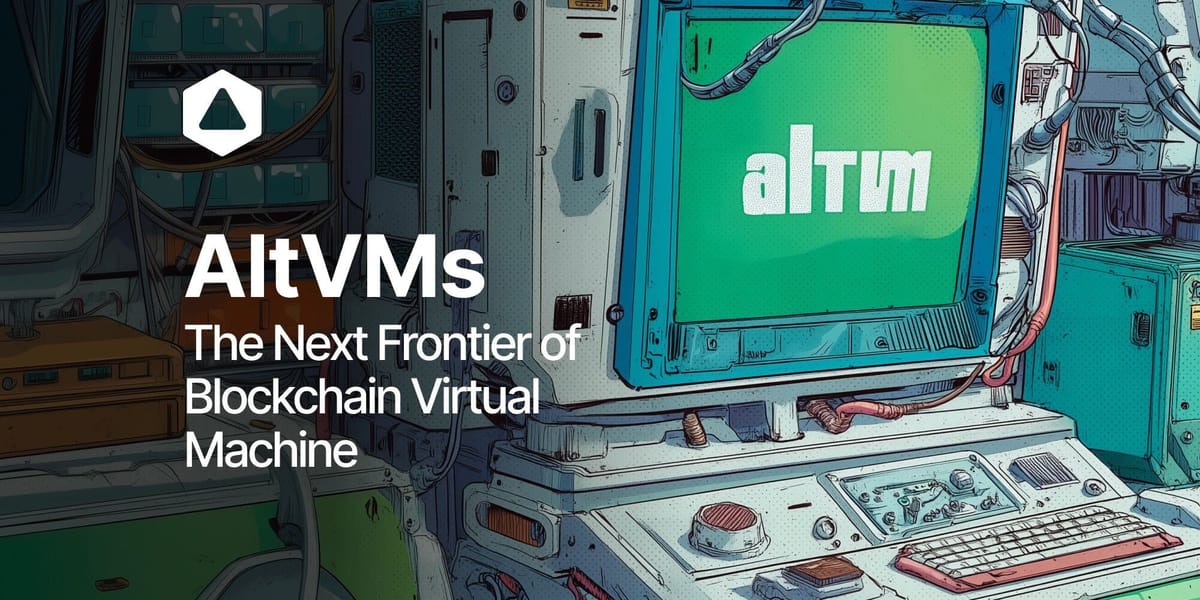
Up until recently, the Ethereum Virtual Machine (EVM) was the elite engine in blockchain development, renowned for its dominance in DeFi, NFTs, and much of Web3.
However, with the increase in usage and needs of the crypto community, the EVM has shown some limitations which have resulted in the creation of a new wave of virtual machines—the Alternative Virtual Machines or simply AltVMs.

Join us in this article as we take you through this new wave of blockchain virtual machines, their key features compared to the EVM, and look at what the future holds for them.
But first, let us understand what a virtual machine is…
What is a Virtual Machine?
In general computing terms, a virtual machine is a software emulation of a physical computer that enables programs to run across different hardware and operating systems. Or put simply, a computer within a computer.
While VMs are a well-known concept in traditional computing, they are also a vital component in blockchain, where they act as the environment for smart contract execution and operation of decentralized applications. Think of them as the operating systems of the blockchain.
The Ethereum Virtual Machine laid the foundation for this concept in blockchain when it was introduced in 2015 with the launch of the Ethereum network. Since then, it has been instrumental in powering some of the most widely used protocols in crypto today, and still holds the largest and most active developer community around.
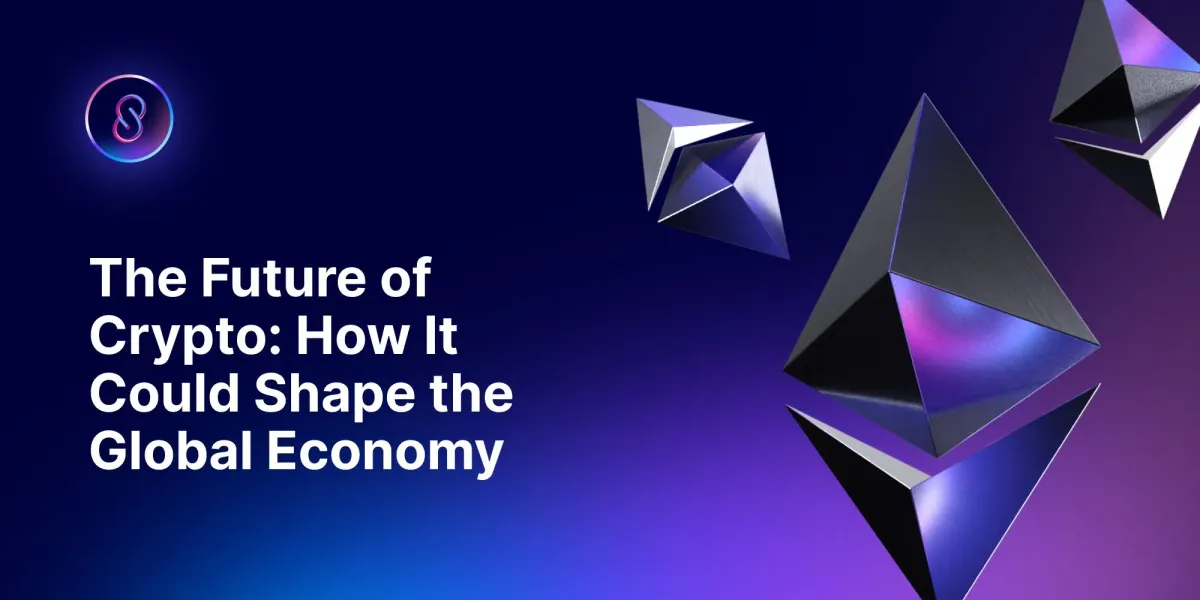
The number of developers in crypto has increased largely since 2015 and is still expected to rise in the coming years. Out of this, the 'one-size-fits-all' EVM has begun to show some cracks.
For instance, it can only process a limited number of transactions per second, which are processed in sequence leading to network congestion and high gas fees. Second, its rigid programming stack that revolves around Solidity and Vyper makes it complex, especially for developers who are new to blockchain.
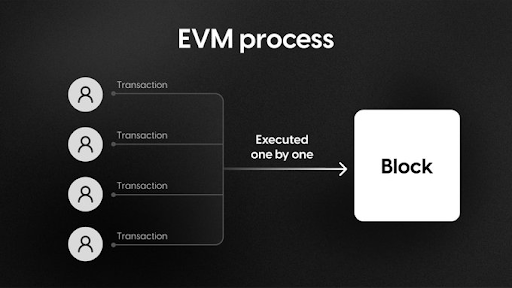
And finally, the 'unlimited authorization' mechanism it grants smart contracts can easily lead to vulnerabilities like bugs or exploits, as we have witnessed in some events.
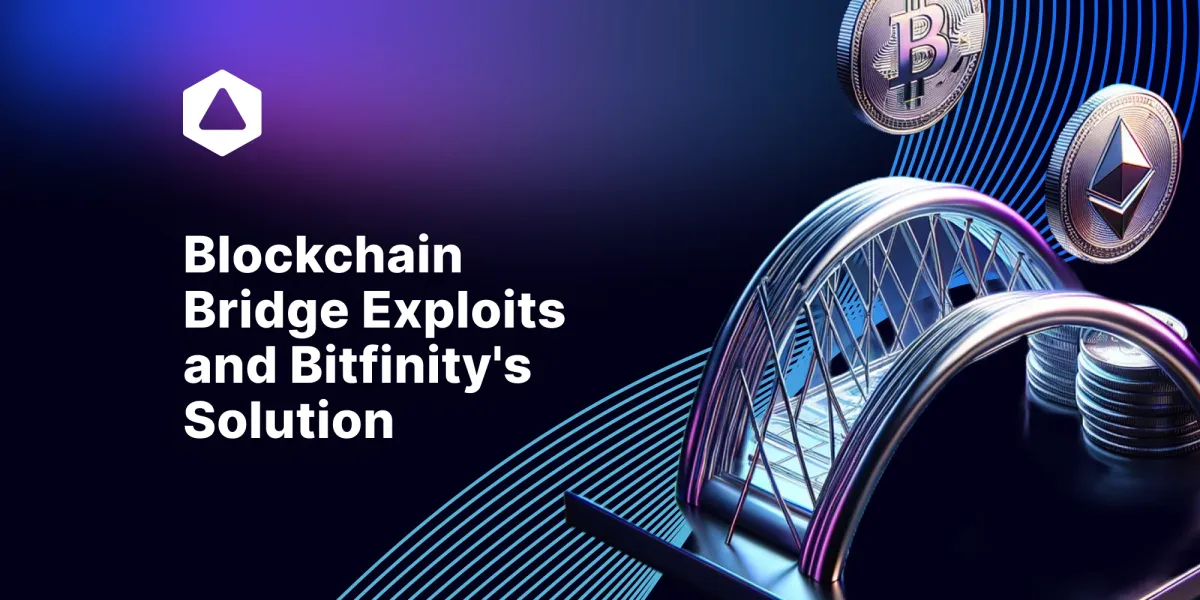
Out of these challenges, alternatives have been sought and luckily enough, they have been found, dubbed—AltVMs...
What are AltVMs?
Any blockchain virtual machine other than the EVM can be considered an AltVM. They are built from scratch or reimagined from other computing models, as they are designed to do what the EVM can’t—or can’t do well enough.
However, that doesn’t make the EVM irrelevant. Just think of it like in the scenario where BTC is still the dominant crypto asset, but we have space for thousands of different crypto assets that co-exist with it.
In a similar way, AltVMs are meant to co-exist with the EVM, what only sets them apart are their unique features over their predecessor. We will discuss these features later, but first, let us look at several examples of these AltVMs.
Examples of AltVMs 🚬
Fueled by the desire to address the limitations within the EVM and the continued growth of users in Web3, several AltVMs have been developed to date. The most prominent include:
The Solana Virtual Machine
Similar to the EVM on Ethereum, the Solana Virtual Machine (SVM) serves as the execution environment of the Solana blockchain. As we know, one of the standout features is its high transaction throughput that is achieved thanks to SVM's unique feature Sealevel, which allows the parallel processing of transactions.
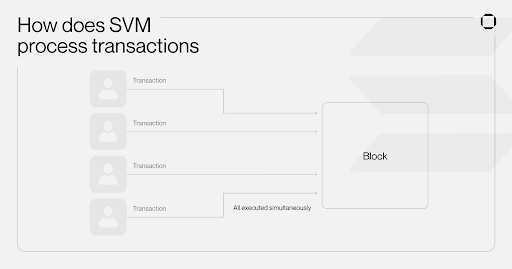
Parallel processing is where instead of processing transactions one-by-one, they get processed together.
In addition, SVM has support for several programming languages like Rust, C, and C++.
Move Virtual Machine
The Move Virtual Machine (MoveVM) is the core execution environment built for the Move programming language. It adopts a resource-oriented programming paradigm, where assets are treated as 'resources' for security against misuse or duplication. This is achieved by separating user data, which is treated as the resources, from program code.
The other key feature of MoveVM is that it allows for the integration of multiple operations within a single transaction, which also allows parallel processing. The virtual machine is used by blockchain projects like Aptos and Sui.
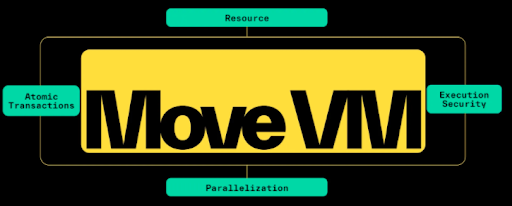
CosmWasm Virtual Machine
CosmWasm VM serves as the execution environment for WebAssembly (Wasm) -based smart contracts for the Cosmos ecosystem.
Wasm is a binary instruction format designed as a portable compilation target for programming languages like C, C++, and Rust.
In simple terms, Wasm allows these languages to run on any platform that supports its runtime and this therefore means that CosmWasm VM also has support for smart contracts written in these languages.
CosmWasm VM shares many features with the EVM, including: deterministic execution (which means that given the same input, the VM will always produce the same output) and sandboxing where contracts are executed in an isolated environment to prevent malicious code attacks.
However, unlike the EVM, which executes each instruction one at a time as we saw earlier, the CosmWasm VM compiles multiple codes into native instructions and execute them together.
Finally, through the Inter-Blockchain Communication (IBC) smart contracts within this environment can communicate with others across different blockchains in the Cosmos ecosystem.
Stylus
Stylus is a virtual machine built as an upgrade for Arbitrum Nitro, the tech stack that powers the Arbitrum network. As we know, Arbitrum is a Layer 2 on Ethereum and therefore it uses the EVM. And perhaps you might be wondering what happens to the EVM now that we have a new VM? 🤔
Relax! Stylus does not replace the EVM but rather acts as a co-equal virtual machine that is completely interoperable with it. A paradigm they term 'the MultiVM'.
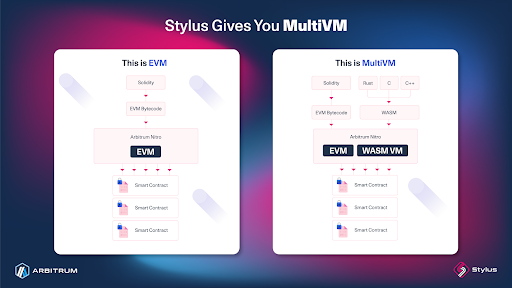
Stylus is built on the Wasm bytecode which means you can write smart contracts in programming languages that compile to it, such as Rust, C, C++, and many others like Sway, Move, and Cairo.
With that in mind, let us now see how AltVMs compare with their predecessor, the EVM…
EVM vs. AltVMs
The first key area of comparison between AltVMs and the EVM is in their focus. From its early days, the EVM was built as a general purpose virtual machine for DeFi, NFTs to DAOs and other social applications which is what we termed as the 'one-size-fits-all'.
On the other hand, most AltVMs are built with a modular architecture, where execution environments can be selected or designed based on what an application actually needs—rather than adapting everything to a single virtual machine.
Second, although the EVM is primarily built for Solidity programming language and some instances of Vyper, most AltVMs offer language flexibility.
Third and last, the majority of AltVMs are built for performance with scalability being key. As we have seen, the EVM on the other hand doesn’t play well with scalability due to its sequential processing mechanism.
What Does the Future of AltVMs Look Like?
Just as developers didn’t settle for the EVM, the future of AltVMs is yet to explode. And one future trend to watch in this is the multi-VM approach. Although the approach is already being explored, there are several teams building solutions to enable developers to leverage the strengths of multiple VMs as opposed to just one.
The other key trend to watch in AltVMs is the integration with AI. Given the continued growth in usage and adoption of AI, virtual machines specifically designed for this purpose are being born.
What About the Bitfinity EVM?
Now that we know what AltVMs are, where does this position the Bitfinity EVM? Well, it can also be considered as an alternative EVM.

It is one that has been developed on the Chain Fusion technology, which is more than unique. As it enables native Bitcoin integration and bridges between the oldest and biggest chains, Bitcoin and Ethereum.
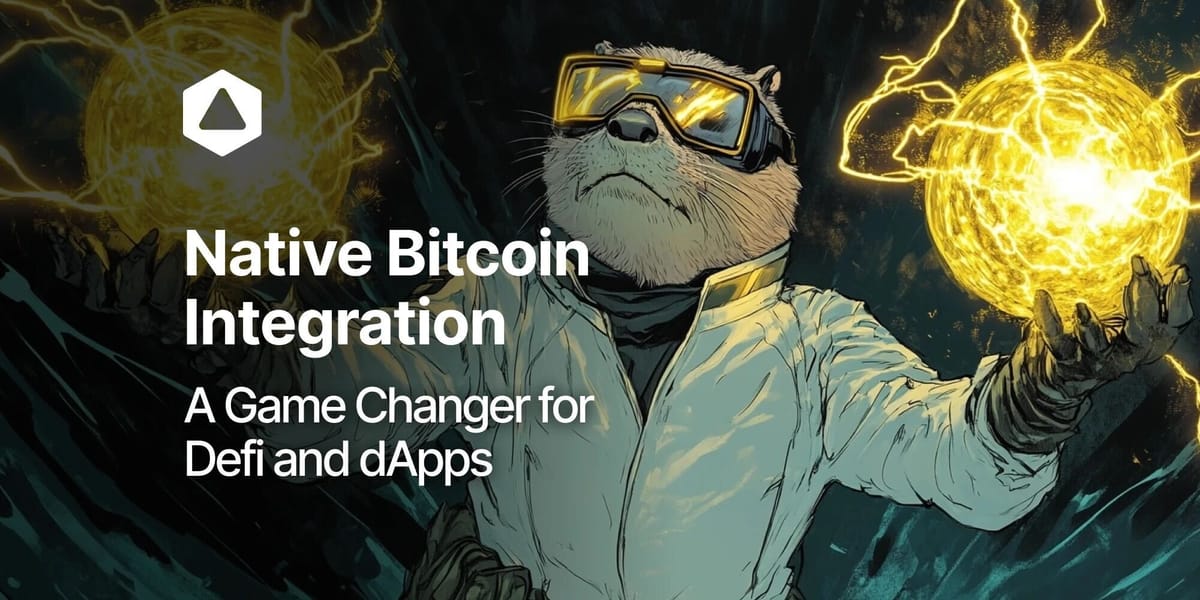
Maybe it could be wise to focus on the behemoths in this space instead of focusing on building whole new ecosystems that still need to stand the test of time.
Bitfinity has introduced a way to enable greater cross-chain interoperability. By connecting Bitcoin to an Ethereum Virtual Machine sidechain and aiming to collaborate with other protocols, it extends advanced smart contract capabilities to the Bitcoin network.
Conclusion
AltVMs are reshaping the blockchain landscape by offering what the EVM can’t—or can’t do well enough. However, it is important to note that while they do so, they aren't absolutely flawless. Each has its pros and cons, and it is upon you to choose between what you like best and what suits your applications most.

Connect with Bitfinity Network
Bitfinity Wallet | Bitfinity Network | Twitter | Telegram | Discord | Github

*Important Disclaimer: The information provided on this website is for general informational purposes only and should not be considered financial or investment advice. While we strive for accuracy, Bitfinity makes no representations or warranties regarding the completeness, accuracy, or reliability of the content and is not responsible for any errors or omissions, or for any outcomes resulting from the use of this information. The content may include opinions and forward-looking statements that involve risks and uncertainties, and any reliance on this information is at your own risk.
External links are provided for convenience, and we recommend verifying information before taking any action. Bitfinity is not liable for any direct or indirect losses or damages arising from the use of this information.






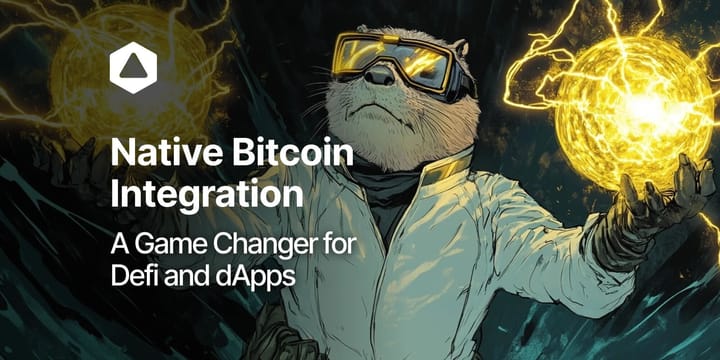

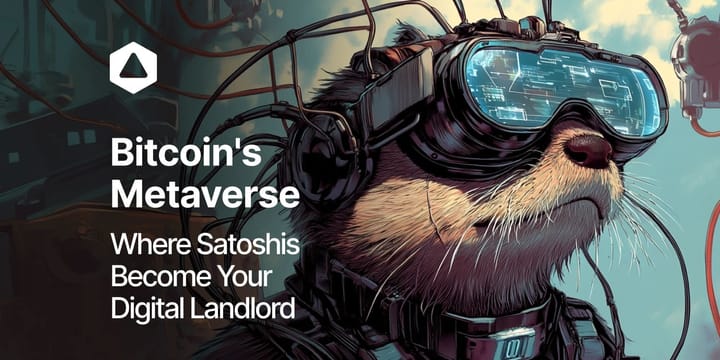
Comments ()